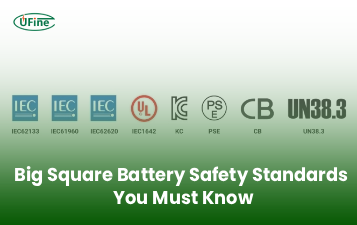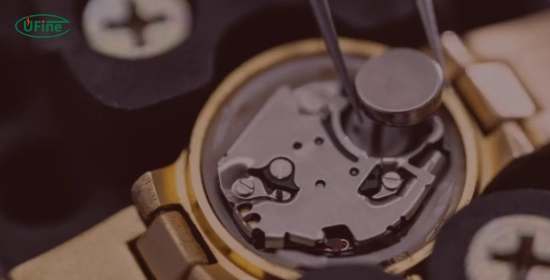
- Part 1. What is a watch battery?
- Part 2. Why are there different watch battery sizes?
- Part 3. Understanding the structure of a watch battery dimensions chart
- Part 4. Common watch battery sizes and their specifications
- Part 5. Comparing silver oxide, alkaline, and lithium batteries
- Part 6. How battery codes reveal dimensions and chemistry
- Part 7. Can different battery codes be used interchangeably?
- Part 8. How to measure your watch battery accurately
- Part 9. Where to buy authentic replacement watch batteries
- Part 10. Extended watch battery dimensions reference chart
- Part 11. FAQs about watch battery dimensions
Understanding watch battery dimensions is essential when replacing a timepiece battery. This comprehensive guide breaks down battery sizes, voltages, and equivalent models to help you find the perfect match. With many watch batteries on the market, selecting the correct one requires more than guessing the shape or code. Knowing the precise measurements and compatible alternatives ensures your watch runs smoothly without damage or performance issues.
Part 1. What is a watch battery?
A watch battery is a compact, coin-shaped power source used in wristwatches and other small electronic devices. These batteries are commonly referred to as button cells due to their small, round design. Their primary function is to deliver a continuous and low-level stream of energy to power analog or digital watches.
The most common types of watch batteries are:
- Silver oxide batteries, known for their stable voltage and long lifespan
- Alkaline batteries, which are more affordable but less durable
- Lithium batteries, often found in digital or high-performance watches
Each type has its own voltage, chemistry, and physical dimensions, which makes it crucial to understand watch battery specifications before making a replacement.
Part 2. Why are there different watch battery sizes?
Watch battery sizes vary because different watches require different power capacities and internal design compatibility. Watches are designed with specific internal compartments that only accept particular battery sizes. Fitting the wrong battery can lead to poor contact, malfunction, or even damage to the device.
Factors that influence battery size include:
- Power consumption of the watch
- Design thickness of the watch case
- Type of watch movement, whether analog, digital, or hybrid
- Battery chemistry, which affects both size and voltage
As a result, manufacturers produce batteries in various diameters and heights to match these needs.
Part 3. Understanding the structure of a watch battery dimensions chart
A watch battery dimensions chart provides technical details about each battery type, including diameter, height, voltage, chemistry, and compatible equivalents. This allows users to compare multiple battery codes and find suitable replacements.
A typical chart includes:
| Battery Code | Diameter (mm) | Height (mm) | Voltage (V) | Chemistry | Equivalent Names |
|---|
This format helps identify potential replacements by comparing measurements and electrical properties. It’s especially useful when the original battery code is unavailable or the label has faded.
Part 4. Common watch battery sizes and their specifications
Below is a list of frequently used watch batteries with their dimensions and equivalents:
| Battery Code | Diameter (mm) | Height (mm) | Voltage | Chemistry | Equivalents |
|---|---|---|---|---|---|
| SR626SW | 6.8 | 2.6 | 1.55V | Silver Oxide | 377, AG4, V377 |
| SR621SW | 6.8 | 2.1 | 1.55V | Silver Oxide | 364, AG1, V364 |
| SR920SW | 9.5 | 2.1 | 1.55V | Silver Oxide | 371, AG6 |
| SR927SW | 9.5 | 2.7 | 1.55V | Silver Oxide | 395 |
| CR2016 | 20.0 | 1.6 | 3.0V | Lithium | DL2016 |
| CR2025 | 20.0 | 2.5 | 3.0V | Lithium | DL2025 |
| CR2032 | 20.0 | 3.2 | 3.0V | Lithium | DL2032 |
| LR44 | 11.6 | 5.4 | 1.5V | Alkaline | AG13, A76 |
| SR44 | 11.6 | 5.4 | 1.55V | Silver Oxide | 357, EPX76 |
These specifications are essential when choosing a replacement battery. Size and voltage must match exactly to avoid performance issues.
Part 5. Comparing silver oxide, alkaline, and lithium batteries
Watch batteries use different chemical compositions, each with unique properties affecting their performance, lifespan, and price.
Silver Oxide
- Voltage: 1.55V
- Provides a stable voltage throughout its life
- Longer lifespan than alkaline batteries
- Ideal for analog and high-precision watches
Alkaline
- Voltage: 1.5V
- More affordable but less durable
- Voltage gradually drops as the battery discharges
- Suitable for basic or budget watches
Lithium
- Voltage: 3.0V
- Most extended shelf life and high energy density
- Often used in digital watches, fitness trackers, and smartwatches
Each chemistry type also influences the battery’s size and compatibility, so referring to a reliable watch battery dimensions chart is critical.
Part 6. How battery codes reveal dimensions and chemistry
Battery codes are more than just random numbers. They contain information about the battery’s size and type.
For example, in the code SR626SW:
- SR indicates Silver Oxide chemistry
- 626 means 6.8 mm diameter and 2.6 mm height
- SW often refers to low-drain use (suitable for analog watches)
Similarly, CR2032 means:
- CR indicates Lithium chemistry
- 20 refers to a 20 mm diameter
- 32 refers to 3.2 mm height
Understanding this coding structure helps you decode any battery and find accurate replacements.
Part 7. Can different battery codes be used interchangeably?
Yes, many batteries have equivalent codes across different brands or regions. Manufacturers often use their own naming systems, but the physical and electrical properties remain the same.
For instance:
- 377 is equivalent to SR626SW, AG4, and V377
- 364 matches SR621SW, AG1, and V364
However, even when codes match, verify:
- Voltage
- Diameter and height
- Chemistry
This ensures full compatibility without risk to the device.
Part 8. How to measure your watch battery accurately
If the battery code has worn off or you’re unsure which one to use, you can measure the battery yourself.
Steps:
- Use a digital caliper for precise measurement
- Measure the diameter across the widest part of the battery
- Measure the height from base to top
- Compare the measurements to a watch battery chart
Avoid rulers or estimations, as even a 0.1 mm difference can affect performance or fit.
Part 9. Where to buy authentic replacement watch batteries
To ensure quality and safety, purchase watch batteries from reputable sources:
- Authorized watch service centers
- Electronics retailers
- Online stores like Amazon, Best Buy, or battery specialists
Choose trusted brands such as:
- Renata
- Sony
- Energizer
- Maxell
- Panasonic
Avoid generic or no-name brands, which may have shorter lifespans or leak over time.
Part 10. Extended watch battery dimensions reference chart
For deeper reference, here is an expanded chart of popular watch battery models:
| Battery | Diameter (mm) | Height (mm) | Voltage | Chemistry | Equivalents |
|---|---|---|---|---|---|
| SR1120SW | 11.6 | 2.05 | 1.55V | Silver Oxide | 391, AG8 |
| SR1130SW | 11.6 | 3.1 | 1.55V | Silver Oxide | 389, AG10 |
| CR1620 | 16.0 | 2.0 | 3.0V | Lithium | DL1620 |
| CR1632 | 16.0 | 3.2 | 3.0V | Lithium | DL1632 |
| CR2320 | 23.0 | 2.0 | 3.0V | Lithium | DL2320 |
| CR2450 | 24.5 | 5.0 | 3.0V | Lithium | DL2450 |
| LR41 | 7.9 | 3.6 | 1.5V | Alkaline | AG3 |
| SR41SW | 7.9 | 3.6 | 1.55V | Silver Oxide | 392, V392 |
This chart can help you identify uncommon batteries or find replacements for older watch models.
Part 11. FAQs about watch battery dimensions
Is it safe to use a different battery model with the same size?
If the size and voltage match, and the chemistry is compatible, using a different model with the same dimensions is usually safe. Always consult a reliable chart to confirm.
How long do various watch batteries last?
Silver oxide batteries can last between 2 to 5 years, depending on the watch type. Lithium batteries may last longer, especially in low-drain devices. Alkaline batteries generally have the shortest lifespan.
What happens if I use the wrong battery size?
An incorrect battery can lead to poor contact, low performance, or even permanent damage to the watch mechanism. Always verify the correct dimensions before installation.
Are all watch batteries non-rechargeable?
Most watch batteries are not rechargeable. Only smartwatches or specialty watches use rechargeable cells. Standard silver oxide, alkaline, or lithium coin cells are designed for single use.
How should I dispose of old watch batteries?
Dispose of old batteries at a certified recycling center or electronics store. They contain materials that can harm the environment and should not go in household trash.
Related Tags:
More Articles

Big Square Battery Safety Standards You Must Know
Learn key safety standards for big square batteries to avoid fire risks, shipping delays, and compliance issues in EV, industrial, and energy storage projects.
Big Square Battery Applications in Solar & Industrial Equipment
Big square batteries deliver high capacity, stable output, and long life for solar, industrial, and backup power. Explore key uses and advantages.
Big Square Battery vs Cylindrical Battery: Complete 2025 Guide for EVs, ESS & Industrial Devices
Choosing the right battery is key for designers and engineers. Compare big square vs cylindrical batteries to find the best fit for your application.
How to Choose the Right Big Square Battery for Your Device?
If you’re choosing a big square battery for EVs, solar, or mobility devices, this guide helps you pick the right solution for real-world needs.
Big Square Battery Complete Guide: Types, Uses & Buying Tips
If you are choosing a big square lithium battery for EVs, solar, RVs, or AGVs, this guide helps you select the right NMC, LFP, or LTO solution with examples.




